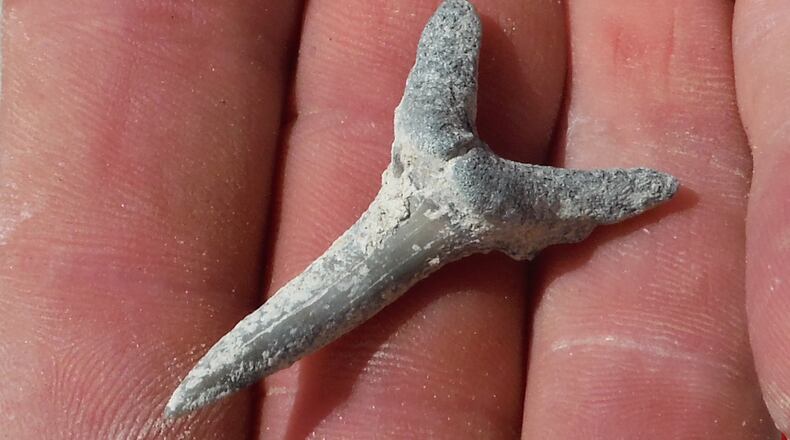Q: What are Georgia’s state mineral, fossil and gem?
A: Today, Georgia may be known for its peaches, but the story of the official mineral, fossil and gem goes back millions of years, when much of the Peach State was covered by oceans, not orchards.
In 1976, the Georgia General Assembly designated staurolite, quartz and shark tooth as the state’s official mineral, gem and fossil. The General Assembly sought to recognize Georgia’s wealth of minerals and gemstones and their importance to the state’s industrial growth and heritage.
Staurolite is a reddish-brown crystal, formed when shale, a fine-grained sedimentary rock, is strongly altered by regional metamorphism (a change in the constitution of rock). Considered a natural phenomenon, these crystals are found in only a few places in the world, including north Georgia. Many generations have collected staurolite — nicknamed “fairy crosses” or “fairy stones”— as good luck charms, in part because of the legend of their origin.
“The story is when Jesus wept, the fairies wept, and their tears became these crosses,” said Shelley Stubbs, president of the Georgia Mineral Society.
While quartz can be found in many colors, such as rose quartz and blue quartz, amethyst and clear quartz are designated as the state gems. The crystals are hexagonal and generally come to a point, Stubbs said.
When faceted, clear quartz resembles a diamond. Clear quartz is also called “rock crystal” or “ice crystal,” from the Greek word for ice, “krystallos.” It is said the Greeks believed the crystal was water that had frozen so hard, it could never be thawed.
Amethyst begins as a light pinkish-violet crystal and can turn deep purple because of iron and aluminum impurities. Its name comes from the ancient Greek word, “methustos,” which means “intoxicated.” The belief was that this gem protected its carrier from drunkenness and ancient Greeks and Romans wore amethysts around their necks and made drinking containers from it to prevent extreme intoxication. It is still commonly used in jewelry for its enchanting color.
Millions of years ago, the southern half of Georgia was covered by ocean waters. As a result, Georgia’s Coastal Plain region, which stretches south along the fall line from Columbus to Macon and Augusta, is home to an abundance of shark tooth fossils.
Shark teeth are usually black and gray but are sometimes white, brown and blue. They can be traced back in Georgia to 375 million years and are one of the most sought-after fossils for collectors.
The shark’s tooth played an important role in the lives of Native Americans in the past, said Steven Beasley, president of Peach State Archaeological Society. Shark teeth were a means of survival. There is evidence that the early Native Americans sharpened sharks’ teeth, probably for hunting and defense, and drilled holes in the fossils for ornamental or religious purposes.
“Indians did use shark teeth as decoration and tools,” he said.
If you’re new in town or have questions about this special place we call home, ask us! E-mail q&a@ajc.com or call 404-222-2002.
About the Author
The Latest
Featured

